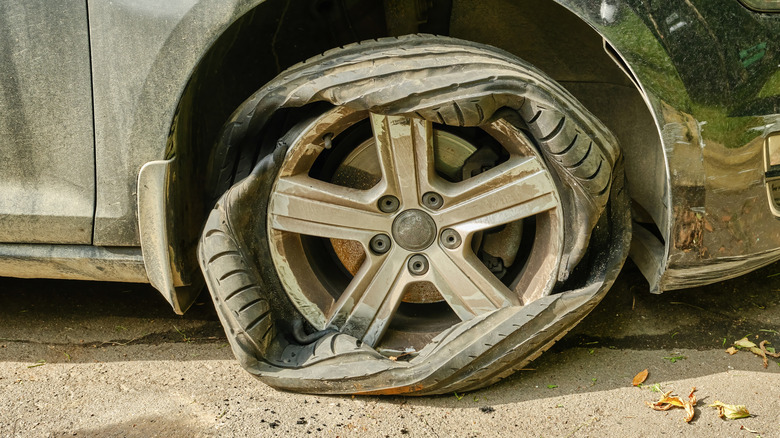
As a car owner, you probably already know that tires come with a size designation. It's a standardized code that helps you identify what exact tires will fit your vehicle perfectly. But the size designation is actually just one of the many things your rubber is rated for. Another key tire rating you should be familiar with is the maximum speed index.
Also shown on the sidewall, a tire's speed rating is the top speed it can run at when under a certain maximum load. It appears as a single letter from
A to Y, immediately following the tire load index and size designation. For the majority of the speed ratings, the speed capacity increases as you move down the alphabet. For instance, the D rating common in farm tractors supports up to 40mph only, while the S rating for sedans is at 112mph.
It's generally okay to install tires with a higher speed rating on your car, and even a lower one if they're for winter use. But if you can get away with doing so, why do tires even have speed limits in the first place, and is it safe to go over them?
Read more: 6 Cars With The Best AWD Systems (And 2 With The Worst)
The Purpose Of The Speed Limits On Tires

Tires have speed limits because they're made of materials that can only perform safely under specific levels of heat and stress. As a tire rolls, heat naturally builds up inside. The faster it goes, the more heat is produced. The problem, though, is that a tire can only endure so much before it gives out. That's why they undergo a standard speed capability assessment: to determine the limit they can safely tolerate. The speed ratings are therefore set to inform users up to how fast the tire is designed to operate at.
During the standard lab tests, the tires are essentially tested for how they handle heat dissipation. They're evaluated in a 77 ºF room and paired with a metal drum that acts as the load. The test machine then spins the tire at a certain speed every ten minutes, going faster with each round. After the tire finishes its ten-minute spin at the speed it's supposed to be rated at, the technician checks it for structural integrity. It shouldn't show signs of failure like tread separation or cracks to earn that speed rating. That means it has successfully withstood that speed. As long as you stay within this limit, you can make your tire last longer.
What Happens If You Go Faster Than Your Tire Speed Rating?

When you go over your tire's speed limit, it will eventually reach a point of breakage. That's because the excessive heat generated weakens the material, leading to deformation, tread separation, and even blowouts.
Going over the speed limit of your tire will also likely result in damage because of one key point: the tire speed rating you see on the sidewall might not be the exact speed rating you get in actual use. As mentioned, the tires earn their speed rating while in laboratory testing. This means they're under ideal conditions. If the conditions aren't the same as the lab tests and your tire isn't inflated correctly, already old, or has been previously repaired, its original speed rating isn't valid anymore. The tire will have a much lower speed index instead. So going past the original speed rating when your tires' actual rating is much lower would only spell disaster. It's one of the worst habits that could quickly slash the life of your tires.
But even if your tire does retain its original speed index, it still doesn't automatically mean you should even drive close to that figure. Public roads have enforced speed limits, and they're typically well below your tire's speed rating. That being said, there's really no practical reason to go faster than what's necessary and legal, especially if you're considering your own safety and want to avoid getting a ticket.
Want the latest in tech and auto trends? Subscribe to our free newsletter for the latest headlines, expert guides, and how-to tips, one email at a time.
Read the original article on SlashGear.











